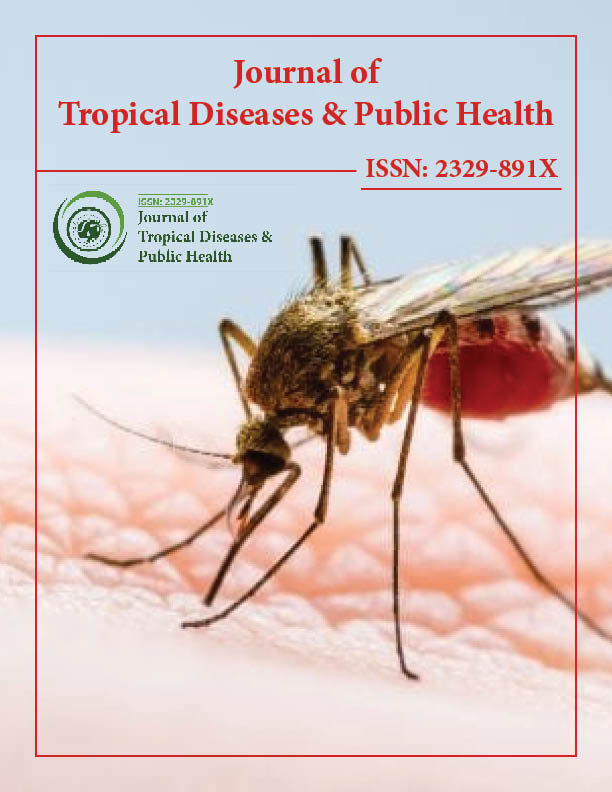Indexed In
- Open J Gate
- Academic Keys
- ResearchBible
- China National Knowledge Infrastructure (CNKI)
- Centre for Agriculture and Biosciences International (CABI)
- RefSeek
- Hamdard University
- EBSCO A-Z
- OCLC- WorldCat
- CABI full text
- Publons
- Geneva Foundation for Medical Education and Research
- Google Scholar
Useful Links
Share This Page
Journal Flyer

Open Access Journals
- Agri and Aquaculture
- Biochemistry
- Bioinformatics & Systems Biology
- Business & Management
- Chemistry
- Clinical Sciences
- Engineering
- Food & Nutrition
- General Science
- Genetics & Molecular Biology
- Immunology & Microbiology
- Medical Sciences
- Neuroscience & Psychology
- Nursing & Health Care
- Pharmaceutical Sciences
Perspective - (2022) Volume 10, Issue 12
Clinical Finding of Chikungunya-Associated Arthralgia and Pharmacologic Treatment
Suzan Bonnes*Received: 01-Nov-2022, Manuscript No. JTD-22-19395; Editor assigned: 04-Nov-2022, Pre QC No. JTD-22-19395 (PQ); Reviewed: 18-Nov-2022, QC No. JTD-22-19395; Revised: 25-Nov-2022, Manuscript No. JTD-22-19395 (R); Published: 02-Dec-2022, DOI: 10.35241/2329-891X. 22.10.364
Description
A person is considered to have suspected Chikungunya if they develop a sudden-onset fever higher than 38.5°C, severe arthralgia or arthritis that is not relieved by other medical conditions, and they have lived in, visited, or travelled within two weeks of the onset of these symptoms in an endemic or epidemic area or have an epidemiologic link to a confirmed case. Other viral or bacterial infections as well as rheumatologic disorders with fever as a symptom are included in the differential diagnosis. Other arboviruses, primarily dengue and Zika, which are common, may circulate at the same time, and in the same epidemic locations. The Mayaro virus, an alphavirus with arthralgia as a sign of infection, must also be taken into account in locations where it is prevalent.
Techniques for the detection of the CHIKV genome and viral isolation in cell cultures are used in the laboratory diagnosis of Chikungunya in the first 5-7 days. During the first week of the illness, specific anti-CHIKV IgM antibodies are generated and can be shown starting on the seventh day. In order to identify the first cases and mark the beginning of an epidemic, specific inspection and testing are only regularly carried out between epidemics. The need for test confirmation is not necessary for all individuals, nevertheless, after continuous transmission has been confirmed. In this situation, laboratory testing is only performed on individuals who exhibit alarm symptoms, have serious illnesses, have atypical symptoms, or whose diagnoses are challenging. Clinical and epidemiological factors may be used to confirm the diagnosis.
Serologic tests are not necessary for patients who seek help for pain management in the sub-acute and chronic phases of arthralgia if they have a history of an episode of acute fever with accompanying edoema and joint pain during an epidemic period (clinical-epidemiologic criteria). Serologic tests for Chikungunya and tests to look for alternative aetiologies must be carried out, at the doctor's discretion, for individuals who do not respond to basic analgesic medication. In the acute phase, non-specific tests like a complete blood count may be required, and in seriously unwell or at-risk individuals, biochemical tests like transaminases, creatinine, and electrolytes may be required.
Treatment
Dipyrone and paracetamol: When used in the right amounts and at regular intervals, these are effective analgesics. Dipyrone can be provided at doses of 30-50 mg/kg given every six hours. Although hepatotoxicity could occur, paracetamol can be recommended at doses of 500-750 mg every six hours, but the total daily dose shouldn't exceed 4 g. One of these two medications should be provided, always in set, regular doses and never when necessary, if the patient's pain is judged to be mild (VAS 1-3).
Opioids: The opioid drugs are potent and safe analgesics, especially in cases of acute pain. Adverse effect Monitoring is necessary, and any potential side effects should be discussed with the patient. Drowsiness and lethargy are the warning signals that come before respiratory depression in the doses that nonspecialists in pain management typically give. When treating severe pain, tramadol is a good option since, in addition to acting on opioid receptors and NMDA (N-methyl-D-aspartate) receptors that are involved in chronic pain, it also acts as an antagonist of these receptors.
NSAIDs and acetylsalicylic acid: NSAIDs should not be taken due to the danger of problems associated with severe forms of Chikungunya, despite the presence of an inflammatory component in the physiopathogenesis of the disease (hemorrhage and renal insufficiency). A similar precaution should be taken with acetylsalicylic acid due to the possibility of bleeding. The use of these medications in such circumstances is likewise prohibited. In the acute phase, the differential diagnosis includes infection with other arbovirosis, such as Dengue, which are associated with thrombocytopenia.
Corticosteroids: Corticosteroids can be linked to increased risks and complications during the acute phase of viremia.
Citation: Bonnes S (2022) Clinical Finding of Chikungunya-Associated Arthralgia and Pharmacologic Treatment. J Trop Dis. 10:364.
Copyright: © 2022 Bonnes S. This is an open access article distributed under the terms of the Creative Commons Attribution License, which permits unrestricted use, distribution, and reproduction in any medium, provided the original author and source are credited.

